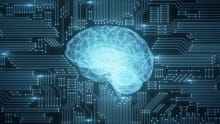Four impact areas HR technology should address
Get Set Learn Read similar articles

Less than a year ago, everyone was going gung-ho about the ‘turn of the decade.’ The hot topic: How 2020 will lead us into a new era of technology dominated by artificial intelligence, data analytics, and machine among other tech innovations. But no one anticipated how the year would unfold. Fast forward three quarters later and companies today are struggling to navigate a very uncertain business climate. Customer preferences have evolved, new age skills are in demand more than ever, and a shortage of skilled professionals is on the rise. This is especially true in the case of niche domains like cybersecurity, whose demand has gone up with during and after the pandemic. According to ISC2, the global shortage of cyber security professionals has crossed 4 million.
To overcome, there are number of factors that organizations need to consider including:
• Supporting their workforce with the right tools
• Supercharging their talent development programs
• Providing the exposure needed to take these programs forward
This has led to a complete shift in the focus towards HR or should I say the spotlight is on the HR.
HR at the forefront
HR as a function is not only responsible to ensure systems work, and employees stay productive and engaged; it’s also accountable for how to ensure everything is seamless – right from the time a new candidate joins the organization to the time they start collaborating and become productive. They are expected to take care of their people’s physical and psychological health while creating a collaborative and productive environment.
Like other critical functions in an organization, HR departments been never been more challenged to tackle the pandemic and at the same time transform their entire processes and mindset as they are today. They answer the big questions - how do we make sure employees are still integrated with the organization, and still compliant with what needs to be done? Take for instance onboarding, some multinational organizations had virtual elements to their onboarding, but it was never imagined that every aspect of onboarding could completely be done virtually.
The human part of the HR
Amidst, all these factors that HR and L&D professionals need to consider is the H (human) part of HR, which becomes very significant in today’s time. Everything revolves around ‘human’ and we never realize how this part is so significant. While there were processes and systems that were driven by HR, the current global crisis has laid a lot of emphasis on the word H. Everything that we are trying to do is around it and ensure that the human part of the HR is taken care of.
HR also needs to support business goals by making sure that employees stay productive. That is a challenge they need to address in the key impact areas. So, how do you continue developing and nurturing talent in your organization and support business continuity? The answer is an intuitively and well-designed HR tech platform that addresses the four key impact areas of talent development.
1. Employee engagement and productivity
One thing to keep in mind is that today almost everyone has access to platforms like Netflix and Prime, which are known for their user interface and the stickiness they provide to the users. What if the same user interface is made available to your employees for learning? (Talk about ease of access for self-paced learning and assessments!) Other key areas include paperless onboarding with digital signatures and file uploads without visits/meet ups. Social collaboration tools and virtual conferencing options and most importantly continuous feedback with their supervisor.
2. Compliance and risk mitigation
Compliance is the result of the work you are doing on the learning management solution; it is not something you should be afraid of. It is the manager who needs to take care of compliance. The idea is to level across in terms of:
• Feedback
• Reaction (online surveys and collaboration tools for feedback)
• Assessment (online quiz and exams)
• Behaviour (change in behavior measured through observation checklists)
• Return on investment
and still make sure there is no gap in how you deliver that.
3. Manager and employee visibility
Talent development results in visibility and we need to provide managers and employees access to key measures and data points for effectiveness. Today, the job of the manager is now much more critical in a virtual set up. They need to motivate and ensure there is proper action and decisions. So, how can you make sure they are able to take those actions? By using manager compliance widgets and analytics, giving them a bird’s eye view for team’s compliance and risks, as well as intelligent coaching attributes to guide managers and flag issues related to direct reports.
4. Analytics and data points
We have been talking about data being the king. But it’s no longer the information highway. The age of information technology has passed. This is the age of the data-inspired idea. We have so much information readily available at our fingertips – but how do we make sure that it all culminates and boils down to something more meaningful? By uncovering, assessing, and using data points which that involve critical employee productivity, involvement, and progress. How good is the system, based on how well it can report on everything that is happening in it? The platform should help you:
• Collect relevant data from the database that can be analyzed to monitor employees’ efficiency and functioning.
• Facilitate management and help in developing insights for creating a balanced working environment within the organization during crisis.
• Provide timely reports and analytics provide quick actions and ensure proactive measures
Things were different a couple of years ago, yet HR has always been the focal point of every conversation. There were times when we used to ask whether HR was a significant part of an organization’s strategy. But today a CHRO takes a seat on the board and works very closely with the CEO – certainly as much as a CFO would – to decide how strategy, budget, tactics are going to move forward. Primarily because CHRO is responsible for people in the organization, tools, and technology to measure people performance, talent development and manage entire workforce. What organizations need today is an agile system that’s orchestrated and built on platforms that are adaptable and willing to change with your businesses’ changing dynamics.






